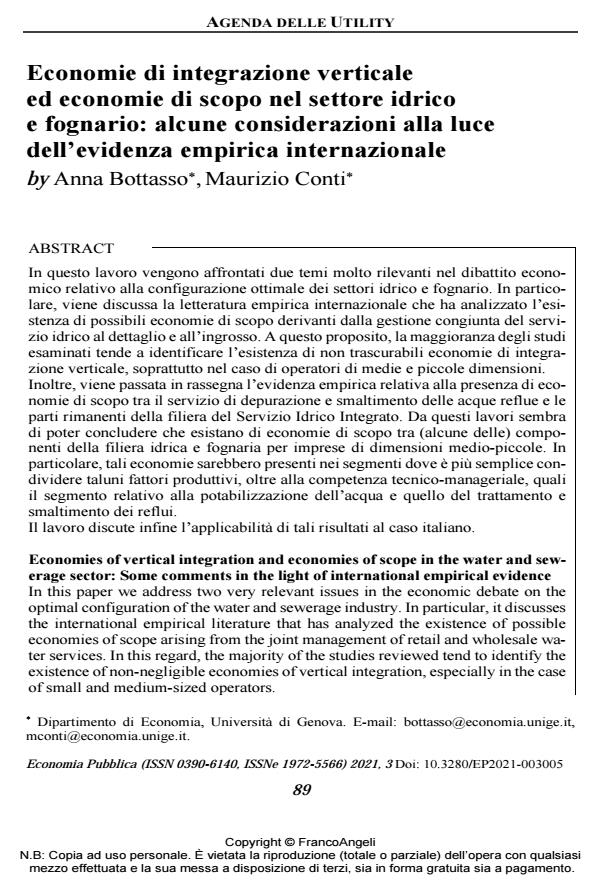Economie di integrazione verticale ed economie di scopo nel settore idrico e fognario: alcune considerazioni alla luce dell’evidenza empirica internazionale
Titolo Rivista ECONOMIA PUBBLICA
Autori/Curatori Anna Bottasso, Maurizio Conti
Anno di pubblicazione 2021 Fascicolo 2021/3
Lingua Italiano Numero pagine 40 P. 89-128 Dimensione file 351 KB
DOI 10.3280/EP2021-003005
Il DOI è il codice a barre della proprietà intellettuale: per saperne di più
clicca qui
Qui sotto puoi vedere in anteprima la prima pagina di questo articolo.
Se questo articolo ti interessa, lo puoi acquistare (e scaricare in formato pdf) seguendo le facili indicazioni per acquistare il download credit. Acquista Download Credits per scaricare questo Articolo in formato PDF

FrancoAngeli è membro della Publishers International Linking Association, Inc (PILA)associazione indipendente e non profit per facilitare (attraverso i servizi tecnologici implementati da CrossRef.org) l’accesso degli studiosi ai contenuti digitali nelle pubblicazioni professionali e scientifiche
In questo lavoro vengono affrontati due temi molto rilevanti nel dibattito eco-nomico relativo alla configurazione ottimale dei settori idrico e fognario. In par-ticolare, viene discussa la letteratura empirica internazionale che ha analizzato l’esistenza di possibili economie di scopo derivanti dalla gestione congiunta del servizio idrico al dettaglio e all’ingrosso. A questo proposito, la maggioranza degli studi esaminati tende a identificare l’esistenza di non trascurabili economie di integrazione verticale, soprattutto nel caso di operatori di medie e piccole dimen-sioni. Inoltre, viene passata in rassegna l’evidenza empirica relativa alla presenza di economie di scopo tra il servizio di depurazione e smaltimento delle acque reflue e le parti rimanenti della filiera del Servizio Idrico Integrato. Da questi lavori sembra di poter concludere che esistano di economie di scopo tra (alcune delle) componenti della filiera idrica e fognaria per imprese di dimensioni medio-piccole. In particolare, tali economie sarebbero presenti nei segmenti dove è più semplice condividere taluni fattori produttivi, oltre alla competenza tecnico-manageriale, quali il segmento relativo alla potabilizzazione dell’acqua e quello del trattamento e smaltimento dei reflui. Il lavoro discute infine l’applicabilità di tali risultati al caso italiano
Parole chiave:settore idrico, economie di scopo, integrazione verticale
Jel codes:L51, L95
Anna Bottasso, Maurizio Conti, Economie di integrazione verticale ed economie di scopo nel settore idrico e fognario: alcune considerazioni alla luce dell’evidenza empirica internazionale in "ECONOMIA PUBBLICA " 3/2021, pp 89-128, DOI: 10.3280/EP2021-003005